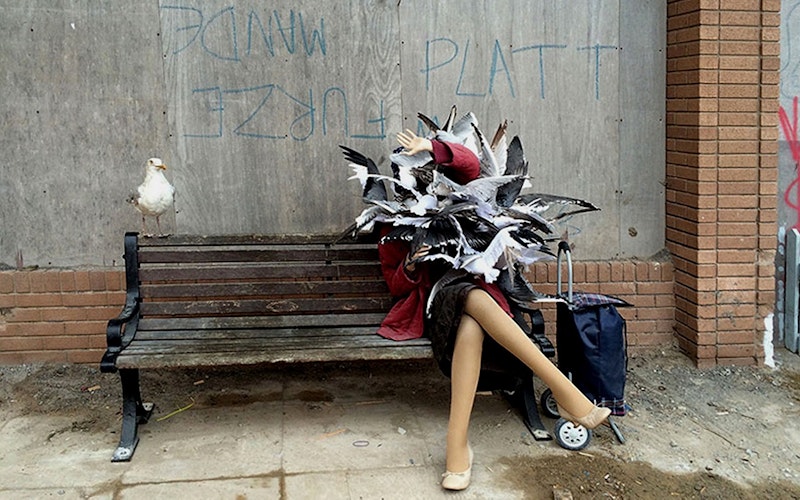
Culture At Large
Is Dismaland as distorted as Disneyland?
“Wish.” “Dream.” “Believe.”
These words defined our obligatory family vacation to Disney World a few years ago, largely because they appeared on endless signage, were incorporated into nearly every show and, I suspect, were pumped into our hotel room via barely audible whispers as we slept. So to prove that the cult of Disney had not indoctrinated us, we began using these words as snarky shorthand in family conversation. (Me: “I don’t know if we have time to go on Space Mountain again.” My kids: “Believe!”)
Don’t get me wrong, we had a wonderful time at Disney World. The look on my youngest’s face as the Electrical Parade went by was worth any number of overpriced hot dogs. But even my elementary-aged kids recognized that Disney’s disturbingly chipper vision of the world is forced, false and ultimately not true to real experience.
The anonymous street artist Banksy is pushing back against the Disney worldview with more than ironic one-liners. His newly opened installation, “Dismaland,” is an alternate version of Disneyland, one that turns the theme park’s icons of cheeriness on their heads. The castle itself has the creepy decay of a child’s play fort that’s been left outside over too many winters, while the overrun lagoon includes a sinking ski boat. Add a sculpture of a woman being attacked by seagulls, and the atmosphere seems to be less Mickey Mouse and more Alfred Hitchcock.
Dismaland, located in an abandoned tourist attraction in England, has more than Disney in its satirical line of fire. One sign says hot dogs are free for “anyone who can guess what animal is in their hot dog” (which makes me reconsider my earlier statement about the Electrical Parade). Yet for all its creativity and societal commentary, I wonder if Dismaland doesn’t offer a vision of the world that’s as limited as the one Disney is selling.
We’re somewhere between Disney and Dismal – in the “now, but not yet.”
Christians, after all, understand our reality as being somewhere in the middle of these opposing points of view. We’re well aware of the Fall and its pervasive effects, which Dismaland appears to capture quite well. (My favorite element from the photos I’ve seen: a sculpture of an orca whale leaping out of a toilet and jumping through a hula hoop.) Yet Christians also embrace the ongoing in-breaking of God into our fallen world. We see Christ’s death on the cross as bringing about God’s new creation on earth, an act of restoration that is not yet complete.
And so, at the moment, we’re somewhere in between Disney and Dismal – this is the “now, but not yet” epoch described in 1 John 3:2 and discussed by the likes of Geerhardus Vos and Abraham Kuyper. Theologian George Eldon Ladd described it this way:
The mission of Jesus brought not a new teaching but a new event. It brought to people an actual foretaste of the eschatological salvation. Jesus did not promise the forgiveness of sins; he bestowed it. He did not simply assure people of the future fellowship of the Kingdom; he invited them into fellowship with himself as the bearer of the Kingdom. He did not merely promise them vindication in the day of judgment; he bestowed upon them the status of a present righteousness. He not only taught an eschatological deliverance from physical evil; he went about demonstrating the redeeming power of the Kingdom, delivering people from sickness and even death.
The depravity of Dismaland has had its time, and some days it feels as if we’re still stuck there. But our hope ultimately lies in Christ’s work and God’s promise of restoration, hints of which we see every day. When that time fully arrives, it will be far more perfect than anything Disney can manufacture. In fact, my guess is that songs about wishing, dreaming and believing will no longer even be needed.
Topics: Culture At Large, Arts & Leisure, Art, Theology & The Church, Theology, News & Politics, World